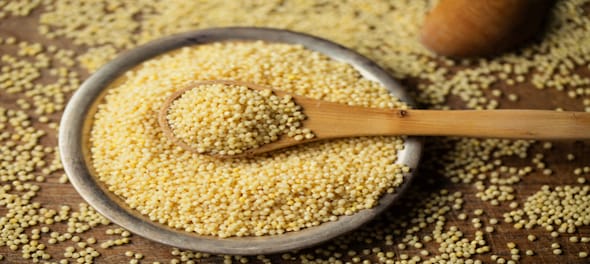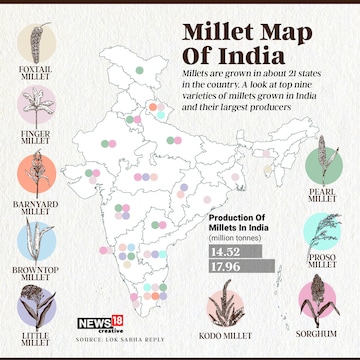
External Affairs Minister S Jaishankar hosted a "millet lunch" in New York on Thursday, December 15. In September, Prime Minister Narendra Modi termed millets a "superfood." Before that, Finance Minister Nirmala Sitharaman had pitched for including millets in the World Food Programme of the World Bank, calling it the "wonder grain of the world."
India has been making attempts to put millets back on the "global food map," create awareness and increase the production and consumption of millets. "As we head into International Year of Millets 2023, a strong message for their greater production, consumption and promotion would help global food security and enhance sustainability in agriculture," Jaishankar said in a tweet on Friday, December 16.
Delighted to welcome UNSG @antonioguterres and UNSC members for a ‘millet lunch’ in New York today. #IYOM2023 pic.twitter.com/6I0K54LTXj
— Dr. S. Jaishankar (@DrSJaishankar) December 15, 2022
This comes as the world is all set to enter the International Year of Millets. The United Nations (UN) has designated 2023 as the Year of Millets for "recognising the value of this crop." But why are they pushing for the use of millets? According to the global body, millets offer not just health benefits but also has the potential to address climate change and food security. It is affordable, nutritious and suitable for cultivation in dry areas.

Millets include a diverse group of cereals including pearl, proso, foxtail, barnyard, little, kodo, browntop, finger and Guinea millets, as well as fonio, sorghum (or great millet) and teff, the Food and Agriculture Organization of the United Nations said. It also listed out some benefits of the cereal in an article.
The benefits of millets | In detail
Millets, the 'superfood'
The FOA says that dietary preference given to wheat, maize or rice led to the decline in the production of millets. And now, the world needs to produce more food to feed a rapidly growing global population — which is projected to reach 8.5 billion by 2030, and a staggering 9.7 billion by 2050, the United Nations says. "There is a heightened need for crop diversification by promoting crops suitable for cultivation in the toughest of environments," it says.
PM Modi has time and again mentioned India's efforts to further popularise millets. He said, "Millets is a superfood. It is not just grown in SCO countries but in several other parts of the world. It is nutritious and a low-cost grain," PM Modi had said during the Shanghai Cooperation Organization (SCO) Summit held in September this year.
He said this while highlighting several disruptions that occurred in the global supply chain because of the COVID-19 pandemic and the Russia-Ukraine crisis.
Meanwhile, at the G20 high-level seminar in Bali, Indonesia, Sitharaman drew leaders' focus on millets, saying: "Millets are the wonder grain of the world... I would like to sum it up for you that the World Food Programme, the world is looking at food insecurity. It should not focus all its attention on just wheat and rice and a few pulses. It should look at coarse grains because that was a part of all our lives some time ago."
Besides this, Dr Nancy Aburto, an agriculture expert at the FAO said, "A renewed focus on boosting the production of millets and highlighting their benefits, is critical to reducing over-reliance on more commonly-grown crops, boosting diverse diets, and food security."



